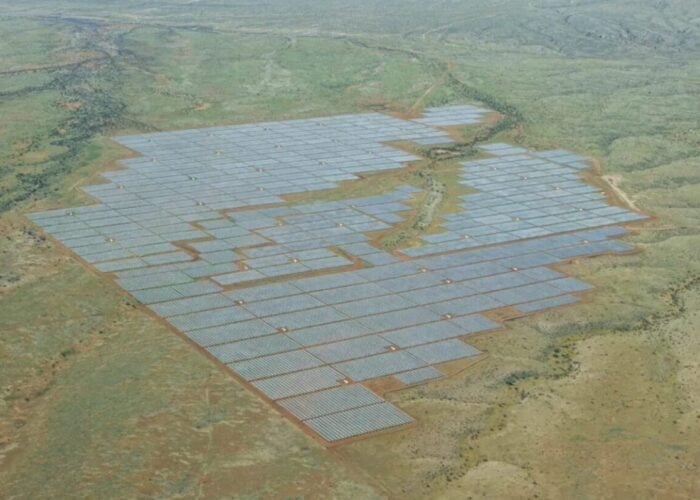Sharp Corporation reported its Solar Cells unit significantly increased sales and operating income in FY2014 due to strong domestic demand and its shift to downstream PV mega-solar project business.
Sharp’s solar cells business unit, which was previously included in the Electronics Components segment in its FY2013 accounting was moved to the Product Business unit for accounting purposes in FY2014. The Product Business unit also includes digital information equipment, health and environmental equipment and business solutions products.
Unlock unlimited access for 12 whole months of distinctive global analysis
Photovoltaics International is now included.
- Regular insight and analysis of the industry’s biggest developments
- In-depth interviews with the industry’s leading figures
- Unlimited digital access to the PV Tech Power journal catalogue
- Unlimited digital access to the Photovoltaics International journal catalogue
- Access to more than 1,000 technical papers
- Discounts on Solar Media’s portfolio of events, in-person and virtual
Sales in Sharp’s solar cells unit increased by 68.9% to ¥439,040 million (US$3.68 billion) in FY2014, compared to the previous year. Sharp said that this was due to growth in domestic sales for residential applications and mega-solar power generation and other industrial applications.
The company reported full-year operating income ¥32,400 million (US$271.97 million), compared to an operating loss of ¥4,497 million (US$37.75 million) in the previous year.
PV business plans in 2015
Despite recurring mainstream media reports that Sharp would exit the PV market due to its chronic debt issues and expected heavy losses for FY2014, its Solar Cells business financial results and reiterated business strategy for the unit indicate the opposite. The rumours are also fuelled by ongoing restructuring, primarily in established markets such as Europe and North America, intended to capitalise on the emerging home energy management systems (HEMS) market.
Sharp noted that it would expand sales of (HEMS) including battery storage and solar module systems in FY2015 as well as build a solid income foundation by shifting emphasis to the Energy Solutions business.
This would also entail increasing the sales ratio for its mega-solar EPC business and strengthen its independent power producer (IPP) and O&M business.
Polysilicon problems
Sharp reported larger than expected FY2014 group-wide losses of ¥222.3 billion (US$1.86 billion) that required a ¥200 billion (US$1.7 billion) bailout from banks.
A key part of losses accrued were said to be related to its long-term polysilicon supply contracts. Sharp noted in its annual report that its long-term polysilicon supply contracts meant it had to purchase a total of 23,312MT between 2014 to the end of 2020, at prices substantially higher than recent market prices.
The weighted average price under the contracts was said to have exceeded the market price by approximately 2,200 yen per kg (US$18.44/kg). Polysilicon spot prices in May have been in the region of US$14/kg to US$16/kg as a short-term glut existed, primarily in China.
In essence, Sharp would seem to be paying over double the current polysilicon spot price.
The company also noted that is being impacted by electricity supply contracts at its solar cell manufacturing plant in Sakai, which was pegged to annual production capacity requirements of 480MW. However, Sharp noted that production was only 160MW per annum.
As a result of its overall business malaise, Sharp said due to the changing business conditions, notably declining demand in Japan due to falling power buyback prices, it planned to expedite its Solar Cell business focus shift to an energy solution business model, which included EPC and downstream mega-solar power plants.






